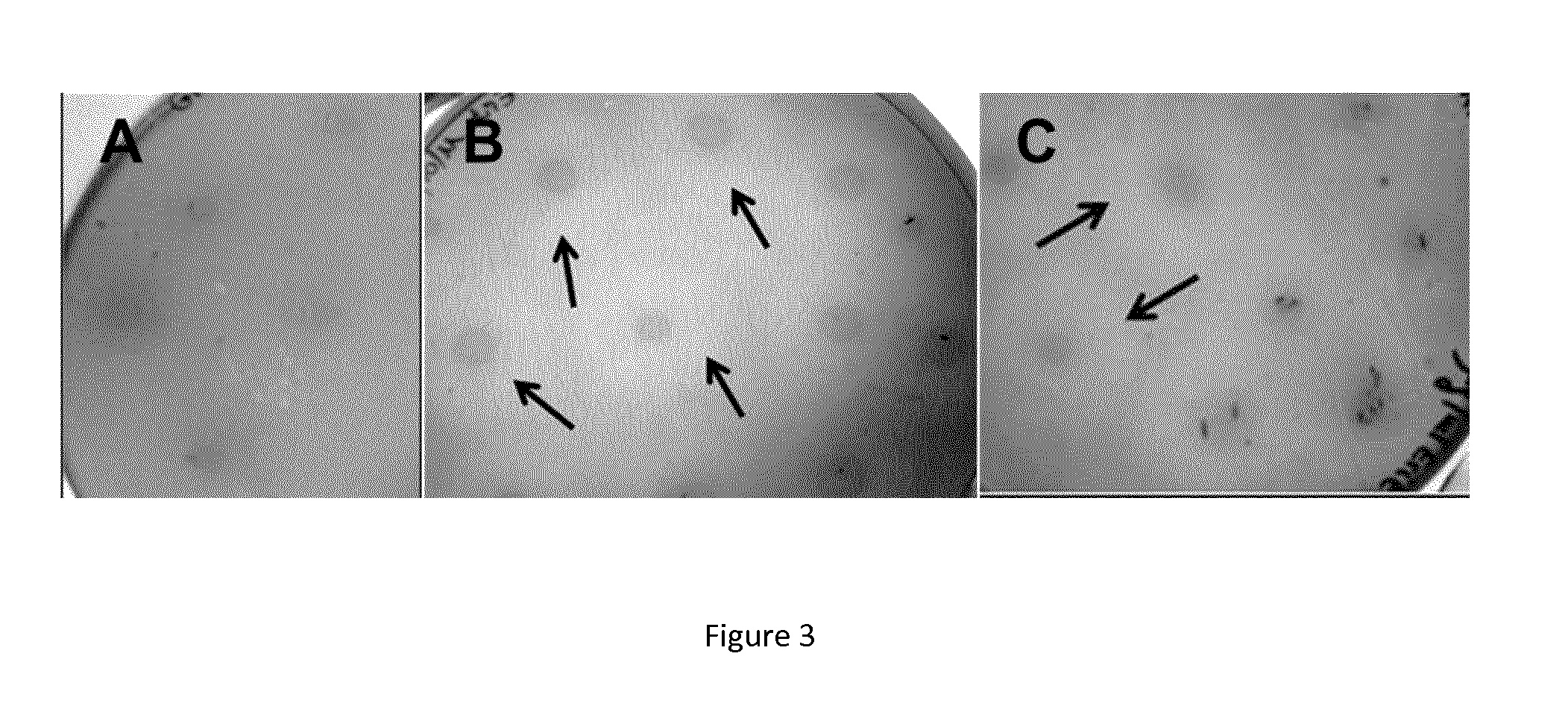Recombinant cellulosome complex and uses thereof
a cellulosome complex and recombinant technology, applied in the field of improved cellulase system, can solve the problems of inability to convert cellulosic biomass into lactic acid, multi-step process of cellulosic biomass, and inability to economically efficient multi-step process
- Summary
- Abstract
- Description
- Claims
- Application Information
AI Technical Summary
Benefits of technology
Problems solved by technology
Method used
Image
Examples
Embodiment Construction
[0028]The present invention relates to the development of an efficient mini-cellulosome, as well as to the uses thereof, particularly for modifying bacteria such as lactic acid bacteria. The invention surprisingly shows that a scaffolding polypeptide can be engineered and produced which allows degradation of cellulose by the cooperative reaction with different types of enzymes, e.g., a cellulosomal endoglucanase, a cellulosomal exoglucanase and a non-cellulosomal β-glycosidase. In addition, the invention shows that such a mini-cellulosome can be built or expressed in lactic acid bacteria, thereby creating improved and remarkable bacteria exhibiting both the efficiency of a potent cellulosome complex and the capacity to produce lactic acid.
[0029]The following is a description of the present invention, including preferred embodiments thereof given in general terms. The present invention is further exemplified in the disclosure given under the heading “Experimentations” herein below, w...
PUM
| Property | Measurement | Unit |
|---|---|---|
| Acidity | aaaaa | aaaaa |
Abstract
Description
Claims
Application Information
 Login to View More
Login to View More - R&D
- Intellectual Property
- Life Sciences
- Materials
- Tech Scout
- Unparalleled Data Quality
- Higher Quality Content
- 60% Fewer Hallucinations
Browse by: Latest US Patents, China's latest patents, Technical Efficacy Thesaurus, Application Domain, Technology Topic, Popular Technical Reports.
© 2025 PatSnap. All rights reserved.Legal|Privacy policy|Modern Slavery Act Transparency Statement|Sitemap|About US| Contact US: help@patsnap.com


